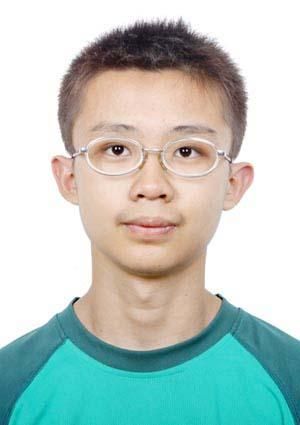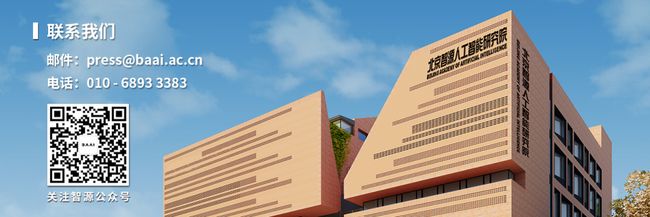初入科研领域,如何正确做科研?丨智源论坛·青年学者研讨会
智源论坛·青年学者研讨会
AI顶会杰出论文、最佳短文、审稿人等联袂分享
官网:https://event.baai.ac.cn/event/61
或点击阅读原文报名,线上会议免费注册
由北京智源人工智能研究院主办的「智源论坛·青年学者研讨会」将于2020年8月4日19:30-21:00在线上召开,本期邀请了ICML 2020杰出论文一作北京理工大学研二魏恺轩和SIGIR 2020最佳短文一作清华大学大三学生于是进行学术报告,在学术分享之后会进行“圆桌讨论:初入科研领域,如何正确做科研?”环节,由北京大学李夏、清华大学游凯超、北京理工大学魏恺轩、清华大学于是担任嘉宾,交流论文写作、平衡科研与生活、和导师合作做科研、顶会审稿等相关话题。
本次研讨会为半公开制,前1000人报名者在审核通过后在指定Zoom Webinar房间进行,现场将抽取幸运观众送出10本《深度学习》技术图书,书籍为嘉宾联袂推荐。
研讨会日程
时间 |
内容 |
19:30-19:35 |
Opening Speech |
李 夏 北京大学 |
|
19:35-20:05 |
Tuning-free Plug-and-Play Proximal Algorithm for Inverse Imaging Problems |
魏恺轩 北京理工大学 |
|
20:05-20:20 |
Few-Shot Generative Conversational Query Rewriting |
于 是 清华大学 |
|
20:20-20:50 |
Panel Discussion:初入科研领域,如何正确做科研? |
主持人:李 夏 北京大学 |
|
嘉 宾:游凯超 清华大学 |
|
魏恺轩 北京理工大学 |
|
于 是 清华大学 |
|
20:50-20:55 |
幸运抽奖 |
20:55-21:00 |
Closing Speech |
学术报告1
报告主题:
Tuning-free Plug-and-Play Proximal Algorithm for Inverse Imaging Problems
免调试即插即用的近端优化算法
https://arxiv.org/pdf/2002.09611.pdf
报告介绍:
What: Plug-and-play (PnP) implicit prior is a concept developed over the past decade. The essential idea of PnP is the similarity between image denoising and proximal calculation in optimization, hence taking the best from both sides. Nowadays, PnP represents the state-of-the-art approach in many imaging problems, including magnetic resonance imaging, computed tomography, microscopy, and even black hole imaging.
Why: However, despite its huge success, PnP suffers a major defect which is the manual tuning of parameters which include noise strength, stopping time. It is necessary to obtain high-quality results across the high discrepancy in terms of imaging conditions and varying scene content.
How: Our work introduces a tuning-free PnP proximal algorithm, which can automatically determine the parameters. A key part of our approach is to develop a policy network for automatic search of parameters, which can be effectively learned via deep reinforcement learning.
Findings: We demonstrate, through extensive numerical experiments, that our learned policy often generates highly-effective parameters, which even often reaches to the comparable performance to the ``oracle” parameters tuned via the inaccessible ground truth. Our technique often demonstrates faster practical convergence and better empirical performance than handcrafted criteria. This is prevalent on both linear and nonlinear exemplary inverse imaging problems, and in particular, we show promising results on Compressed Sensing MRI and phase retrieval.
报告提纲:
1. 背景知识(即插即用的近端优化算法、逆成像问题、图像重构/恢复)
2. 存在的核心挑战/问题
3. 我们的方法
4. 实验分析与结果展示
5. 总结与展望
听众受益:
背景知识:初步了解图像恢复问题以及ADMM算法
解决问题:PnP算法中长久存在的开放问题
受众群体:对计算成像、图像恢复感兴趣的人群
报告人:
魏恺轩
kxwei.net
北京理工大学硕士生,以第一作者身份发表CVPR/ICML论文多篇,是WACV/ECCV/NeurIPS/SIGGRAPH Asia等会议的审稿人,主要研究方向为计算摄影学、计算成像学、计算机低层视觉。
学术报告2
报告主题:
Few-Shot Generative Conversational Query Rewriting
基于小样本学习的对话式检索查询重写方法
https://arxiv.org/pdf/2006.05009.pdf
报告介绍:
Conversational Information Retrieval is widely viewed as an important direction of the next-generation information retrieval systems since it is able to better satisfy users' s complex information needs while providing convenient and precise information access through conversational interfaces. Natural conversational queries are often concise and context-dependent, which provides a challenge to query understanding. A direction to tackle this challenge is to rewrite the conversational queries to de-contextualized queries that include all necessary information, and then use them to perform standard ad-hoc retrieval. However, training a query rewriting model usually requires a large number of manual query rewrites that are expensive to collect and not available in many domains. Our work studies learning with GPT-2 in conversational query rewriting using few or even zero manual rewriting labels. We present two approaches, based on rules and self-learning respectively, to generate weak supervision signals for this task using the ad hoc search sessions abundant in search logs. On the TREC Conversational Assistance Track, our weakly-supervised GPT-2 rewriter improves the state-of-the-art ranking accuracy by 12%, only using very limited amounts of manual query rewrites. In the zero-shot learning setting, the rewriter still gives a comparable result to previous state-of-the-art systems. Our analyses reveal that GPT-2 effectively picks up the task syntax and learns to capture context dependencies, even for hard cases that involve group references and long-turn dependencies.
报告提纲:
1. 对话式信息检索介绍
2. 现有方法以及问题
3. 我们的方法
4. 实验与分析
5. 总结
听众受益:
1. 背景知识:信息检索的基本知识
2. 解决问题:对话式信息检索
3. 受众群体:对信息检索以及对话式AI感兴趣的人群
报告人:
于是
清华大学计算机系大三本科生,指导老师为刘知远副教授。目前学习与研究方向为开放域问答和信息检索。
圆桌论坛:初入科研领域,如何正确做科研?
主持人:
李夏
xialipku.github.io/
介绍:北京大学毕业硕士生,指导老师为林宙辰教授。目前学习与研究方向为图像分割和视频理解。
特邀嘉宾:
游凯超
youkaichao.github.io/
2019年清华大学特等奖学金获得者,曾获高通奖学金、商汤奖学金、一二·九奖学金、蒋南翔奖学金,以第一作者或共同第一作者身份发表CVPR/ICML论文多篇,是AAAI/CVPR/ICLR/TIP/ICML等期刊会议的审稿人,获评软件学院科研科创年度人物,主要研究方向为迁移学习及深度学习。
以及两位带来学术报告的北京理工大学魏恺轩、清华大学于是将一同担任嘉宾。
圆桌论文问题(部分)
如何步入科研?科研心路历程
如何步入科研?科研心路历程
学术研究中资质或天赋跟勤奋哪个更重要?
平时是如何寻找论文思路的?比如第一次写学术论文无从下手怎么办?
关于论文经验:如何写论文、阅读论文/文献、管理论文……平时关心哪些顶会,及被收录之后带来的种种
科研生活是忙碌的,时间管理之道
在和导师相处及合作做研究的心得和体会
做学术会议或期刊的审稿人是一种怎样的体验?
哪些细节更容易打动审稿人?
一个好的审稿人应具备哪些素养和重要的思维
毕业后的规划
报名方式
1. 复制官网地址 https://event.baai.ac.cn/event/61 到浏览器进入官网注册报名
2. 扫描上方二维码直达官网报名
3. 点击左下角“阅读原文”前往注册
4. 现场观众将在抽奖环节有机会获得10本技术图书






